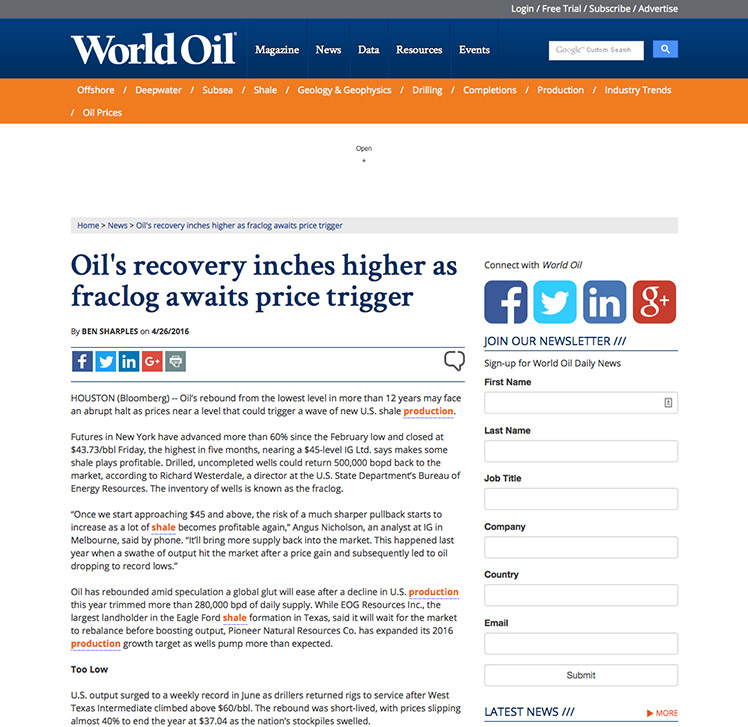Lower Oil Prices: Zero Stimulus to US Economy lweb.es/f1442 10.2.2016
![]() OEF REVIEW:The Brookings report “Lower Oil Prices and the U.S. Economy: Is This Time Different?” explores the effect on U.S. real GDP growth of the sharp decline in the global price of crude oil and hence in the U.S. price of gasoline after June 2014. This decline produced a stimulus of about 0.7 percentage points of real GDP growth by raising private real consumption and an additional stimulus of 0.04 percentage points reflecting a shrinking petroleum trade deficit. However, the net stimulus since June 2014 has been effectively zero. No evidence of an additional role for frictions in reallocating labor or the price of gasoline in explaining the sluggish response. Neither was there evidence of lower oil costs stimulating other business investment, nor an increase in household savings, nor of households deleveraging.
OEF REVIEW:The Brookings report “Lower Oil Prices and the U.S. Economy: Is This Time Different?” explores the effect on U.S. real GDP growth of the sharp decline in the global price of crude oil and hence in the U.S. price of gasoline after June 2014. This decline produced a stimulus of about 0.7 percentage points of real GDP growth by raising private real consumption and an additional stimulus of 0.04 percentage points reflecting a shrinking petroleum trade deficit. However, the net stimulus since June 2014 has been effectively zero. No evidence of an additional role for frictions in reallocating labor or the price of gasoline in explaining the sluggish response. Neither was there evidence of lower oil costs stimulating other business investment, nor an increase in household savings, nor of households deleveraging.


